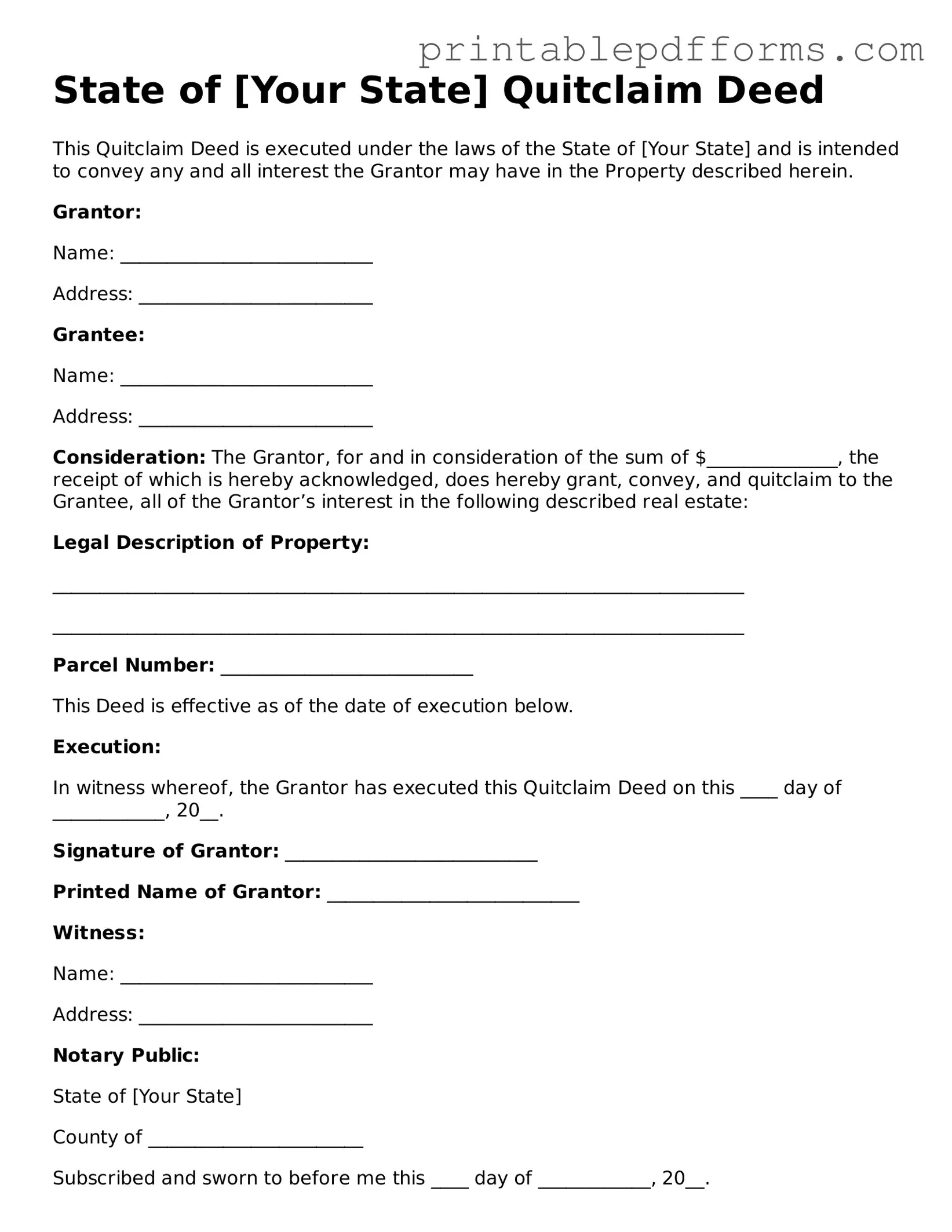State of [Your State] Quitclaim Deed
This Quitclaim Deed is executed under the laws of the State of [Your State] and is intended to convey any and all interest the Grantor may have in the Property described herein.
Grantor:
Name: ___________________________
Address: _________________________
Grantee:
Name: ___________________________
Address: _________________________
Consideration: The Grantor, for and in consideration of the sum of $______________, the receipt of which is hereby acknowledged, does hereby grant, convey, and quitclaim to the Grantee, all of the Grantor’s interest in the following described real estate:
Legal Description of Property:
__________________________________________________________________________
__________________________________________________________________________
Parcel Number: ___________________________
This Deed is effective as of the date of execution below.
Execution:
In witness whereof, the Grantor has executed this Quitclaim Deed on this ____ day of ____________, 20__.
Signature of Grantor: ___________________________
Printed Name of Grantor: ___________________________
Witness:
Name: ___________________________
Address: _________________________
Notary Public:
State of [Your State]
County of _______________________
Subscribed and sworn to before me this ____ day of ____________, 20__.
Signature of Notary Public: ___________________________
My Commission Expires: ___________________________
Note: A Quitclaim Deed does not guarantee that the Grantor holds a valid title and provides no warranties regarding the condition of the title.
